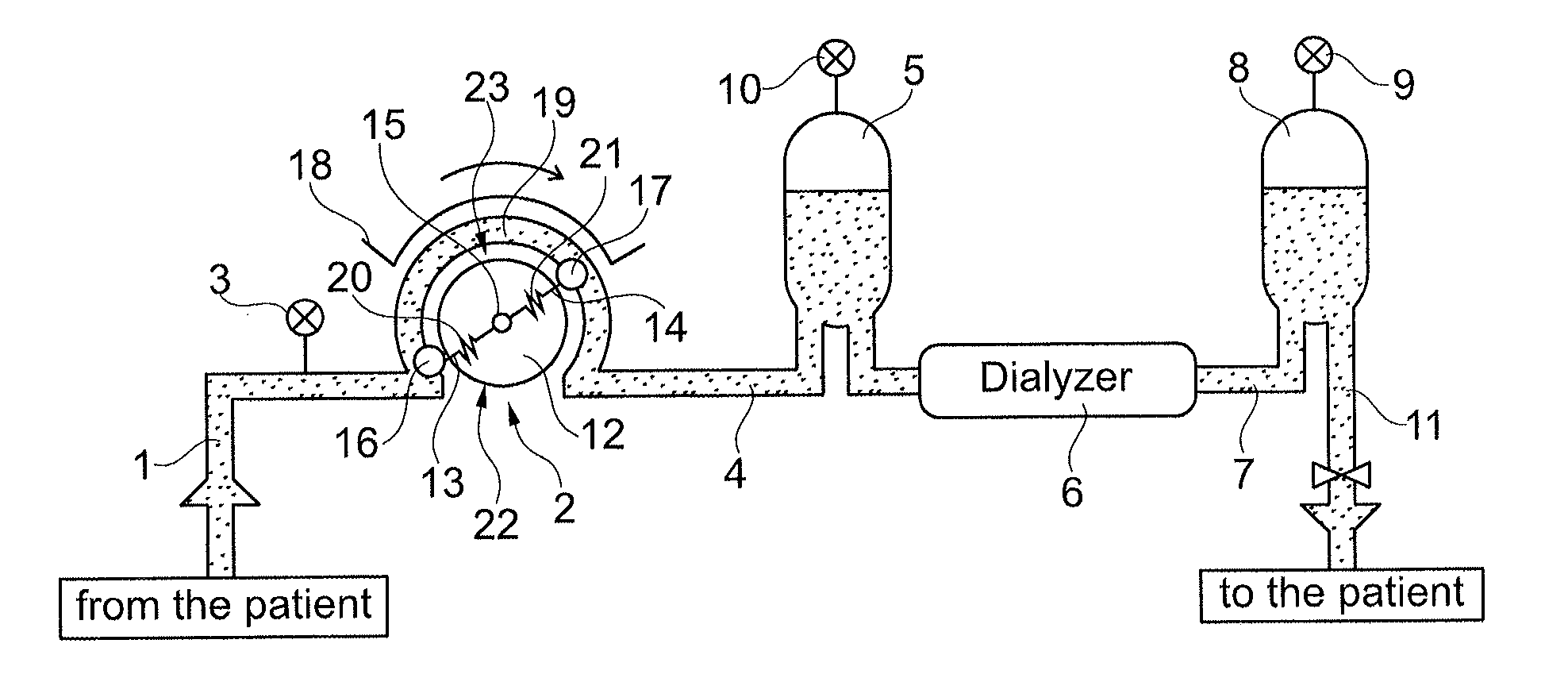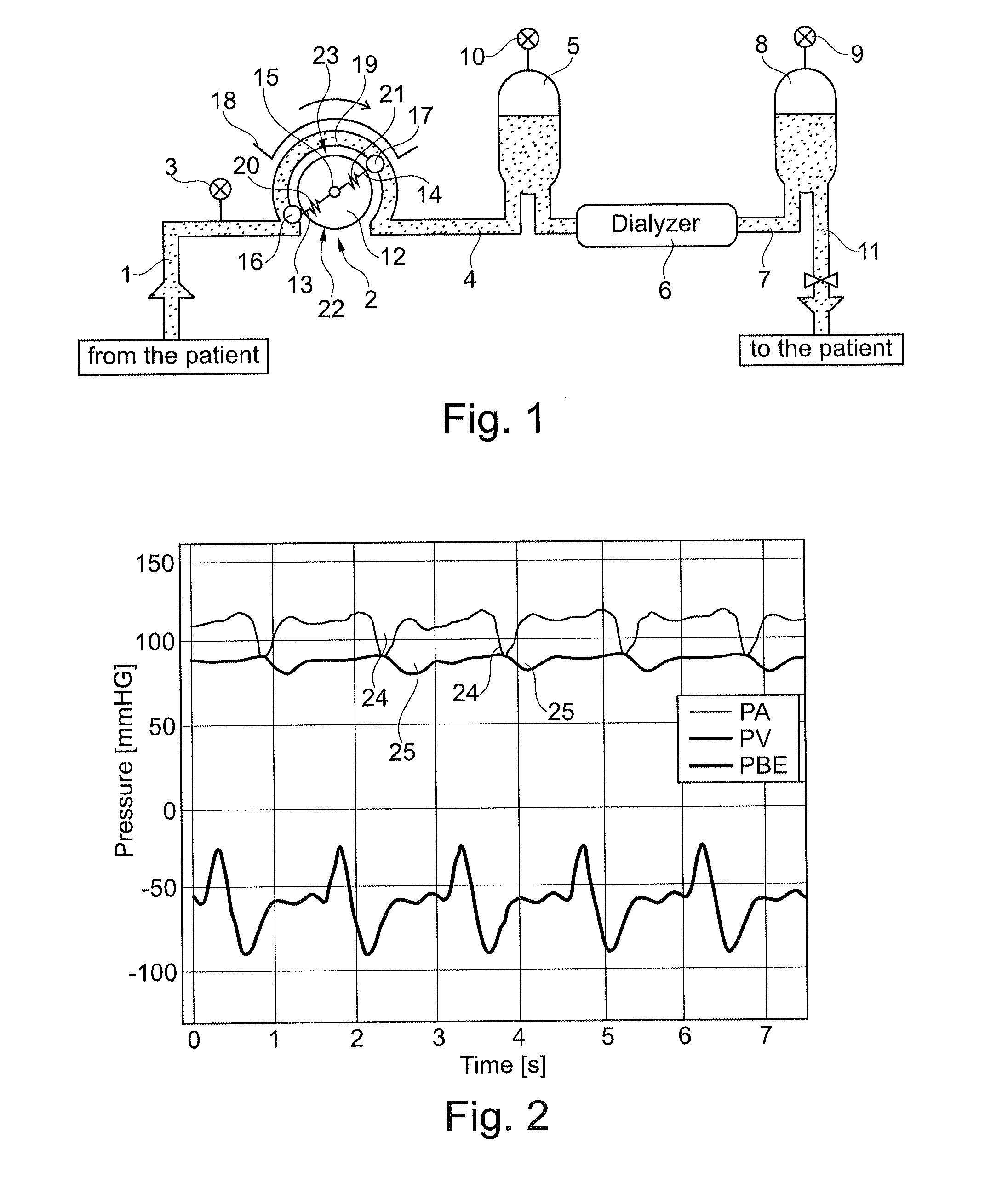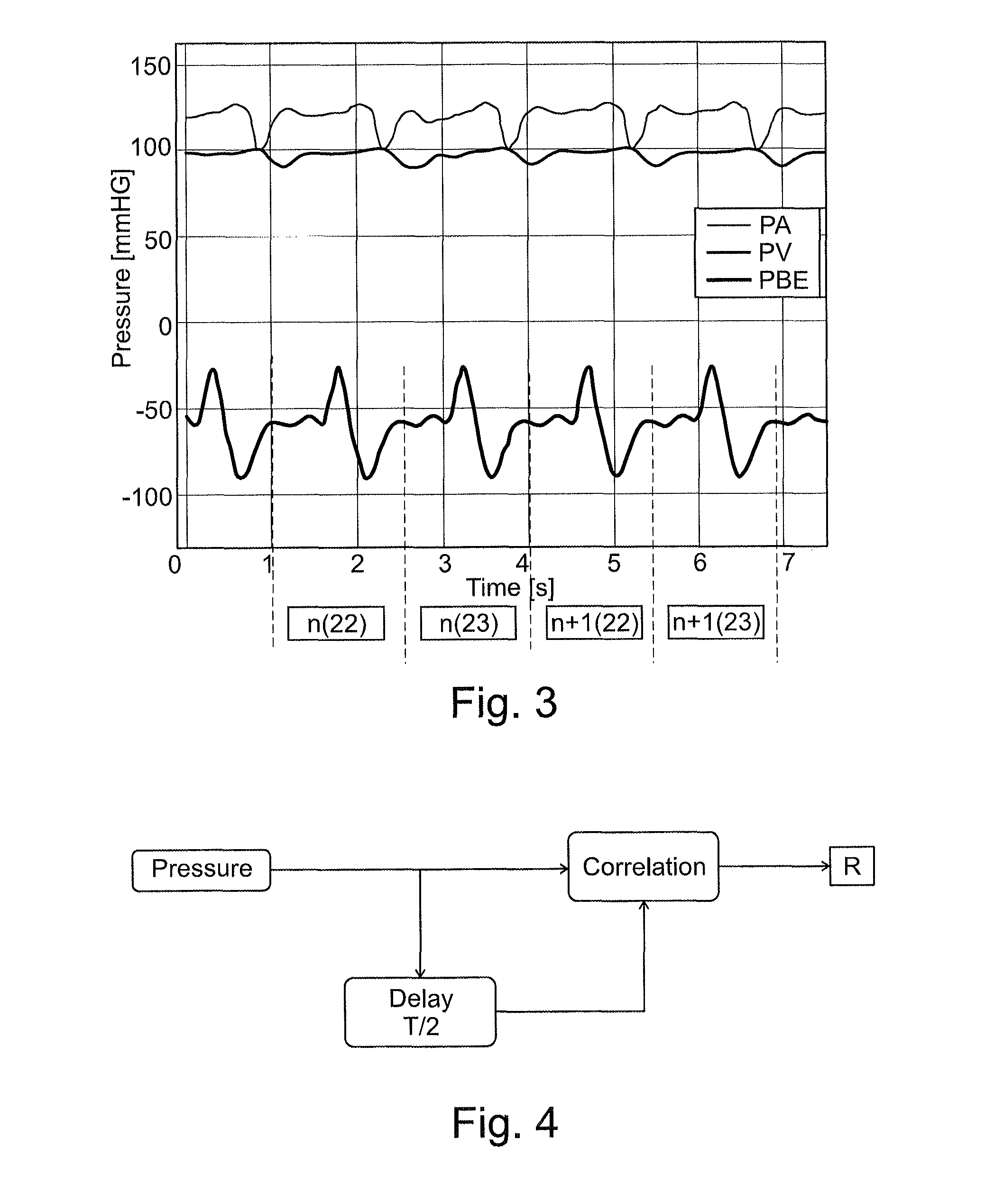Fluid conveyance monitoring system in an extracorporeal blood treatment device
a monitoring system and blood treatment technology, applied in medical devices, instruments, mechanical devices, etc., to achieve the effect of increasing the occurrence of haemolysis
- Summary
- Abstract
- Description
- Claims
- Application Information
AI Technical Summary
Benefits of technology
Problems solved by technology
Method used
Image
Examples
Embodiment Construction
[0042]FIG. 1 shows by way of an example a section of a device for extracorporeal blood treatment which is operated using the method according to aspects of the invention. The entire extracorporeal blood circuit of the device is essentially shown.
[0043]On the low-pressure side this circuit comprises an arterial blood line 1 with which blood is fed from a patient, who is not shown, to a peristaltic pump 2 of the treatment device. Before the peristaltic pump 2, an arterial pressure monitor 3 is provided which measures the pressure before the peristaltic pump 2, i.e., the pressure on the low-pressure or arterial side.
[0044]On the high-pressure side, a line 4 feeds as yet untreated blood under high pressure and contaminated with toxins from the peristaltic pump 2 to a droplet chamber 5 and from there to a dialyzer 6. The latter is fed dialysis fluid on the input side (not shown). In the dialyzer 6, blood is treated in familiar fashion with dialysis fluid, e.g. purified. Used dialysis flu...
PUM
| Property | Measurement | Unit |
|---|---|---|
| pressure | aaaaa | aaaaa |
| fluid pressure | aaaaa | aaaaa |
| volume | aaaaa | aaaaa |
Abstract
Description
Claims
Application Information
 Login to View More
Login to View More - R&D
- Intellectual Property
- Life Sciences
- Materials
- Tech Scout
- Unparalleled Data Quality
- Higher Quality Content
- 60% Fewer Hallucinations
Browse by: Latest US Patents, China's latest patents, Technical Efficacy Thesaurus, Application Domain, Technology Topic, Popular Technical Reports.
© 2025 PatSnap. All rights reserved.Legal|Privacy policy|Modern Slavery Act Transparency Statement|Sitemap|About US| Contact US: help@patsnap.com



